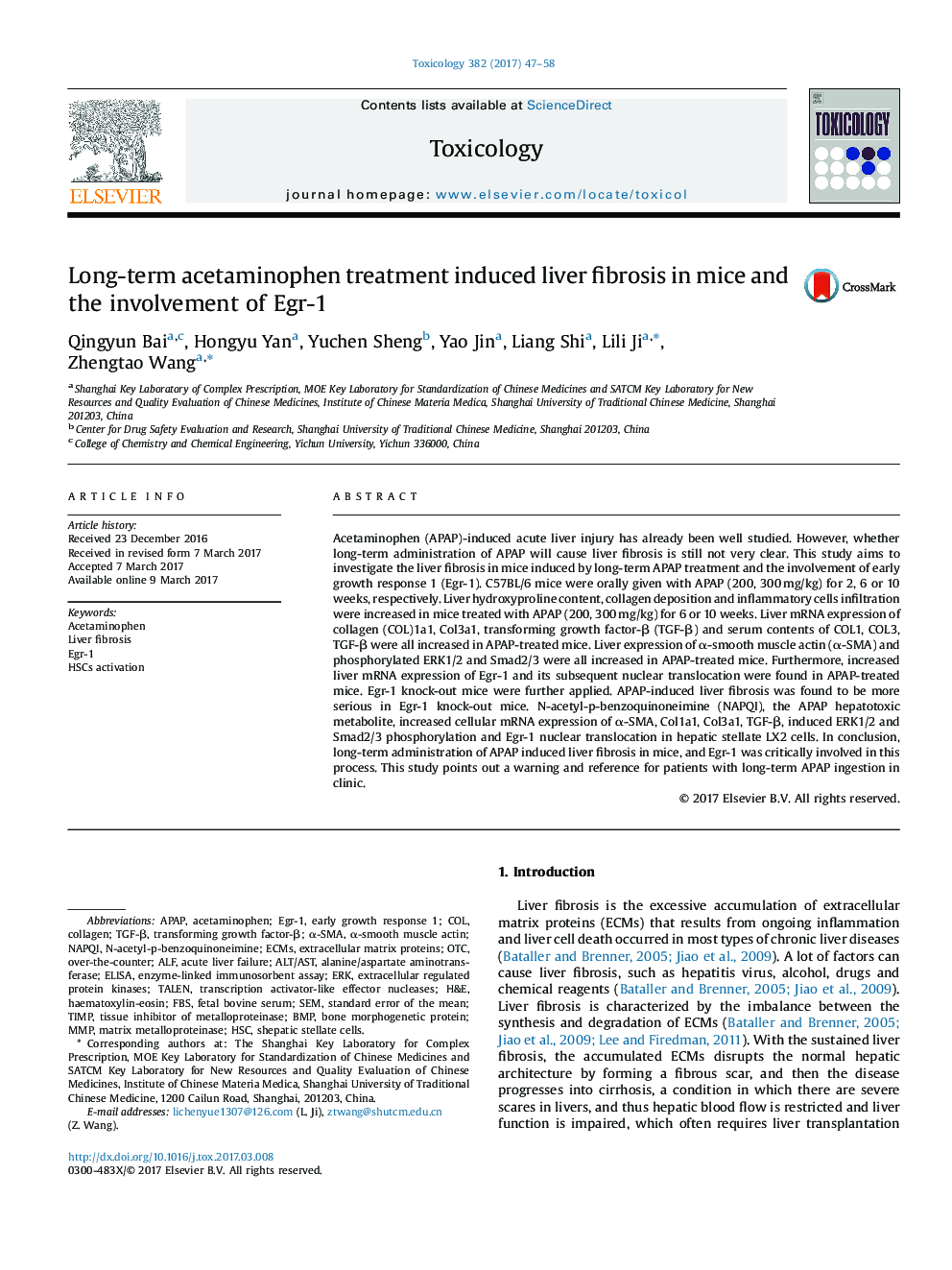| کد مقاله | کد نشریه | سال انتشار | مقاله انگلیسی | نسخه تمام متن |
|---|---|---|---|---|
| 5561776 | 1562290 | 2017 | 12 صفحه PDF | دانلود رایگان |

- Long-term APAP treatment led to collagen deposition.
- Long-term APAP treatment led to HSCs activation.
- Long-term APAP treatment led to the phosphorylation of Smad2/3 and ERK1/2.
- APAP toxic metabolite led to the activation of hepatic stellate LX2 cells.
- Egr-1 deletion mice were more sensitive to APAP-induced liver fibrosis.
Acetaminophen (APAP)-induced acute liver injury has already been well studied. However, whether long-term administration of APAP will cause liver fibrosis is still not very clear. This study aims to investigate the liver fibrosis in mice induced by long-term APAP treatment and the involvement of early growth response 1 (Egr-1). C57BL/6 mice were orally given with APAP (200, 300 mg/kg) for 2, 6 or 10 weeks, respectively. Liver hydroxyproline content, collagen deposition and inflammatory cells infiltration were increased in mice treated with APAP (200, 300 mg/kg) for 6 or 10 weeks. Liver mRNA expression of collagen (COL)1a1, Col3a1, transforming growth factor-β (TGF-β) and serum contents of COL1, COL3, TGF-β were all increased in APAP-treated mice. Liver expression of α-smooth muscle actin (α-SMA) and phosphorylated ERK1/2 and Smad2/3 were all increased in APAP-treated mice. Furthermore, increased liver mRNA expression of Egr-1 and its subsequent nuclear translocation were found in APAP-treated mice. Egr-1 knock-out mice were further applied. APAP-induced liver fibrosis was found to be more serious in Egr-1 knock-out mice. N-acetyl-p-benzoquinoneimine (NAPQI), the APAP hepatotoxic metabolite, increased cellular mRNA expression of α-SMA, Col1a1, Col3a1, TGF-β, induced ERK1/2 and Smad2/3 phosphorylation and Egr-1 nuclear translocation in hepatic stellate LX2 cells. In conclusion, long-term administration of APAP induced liver fibrosis in mice, and Egr-1 was critically involved in this process. This study points out a warning and reference for patients with long-term APAP ingestion in clinic.
104
Journal: Toxicology - Volume 382, 1 May 2017, Pages 47-58